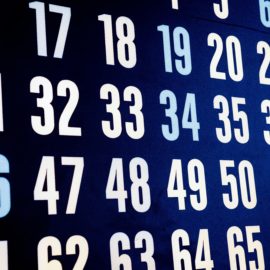

This article is an excerpt from the Shortform book guide to "How to Take Smart Notes" by Sönke Ahrens. Shortform has the world's best summaries and analyses of books you should be reading.
Like this article? Sign up for a free trial here .
What is the Zettelkasten note-taking system? How is Zettelkasten superior to the traditional note-taking methods?
The Zettelkasten (also known as the slip-box) system was invented by Niklas Luhmann, an incredibly productive German sociologist. Not only did Luhmann publish nearly 60 books within his lifetime, but he also has several posthumously-published books to his name—thanks to the ideas he collected within his slip-box.
Keep reading to learn about the origins of Luhmann’s Zettelkasten note-taking method.
The Origins of the Zettelkasten System
Luhmann was vocal about how the Zettelkasten system helped his productivity. However, the system only gained popularity within a small niche, which Ahrens attributes to two main reasons. The first is primarily linguistic: Since Luhmann was German, most of the publicly available information about his system was in German.
(Shortform note: If you do speak German, reviewing the digitized version of Luhmann’s Zettelkasten in conjunction with his published works may help you gain a more thorough understanding of his system.)
Second, as Ahrens argues, people misunderstood the system: They focused solely on the zettelkasten and not the overall workflow dictated by the Zettelkasten. Since they didn’t understand how to use the zettelkasten system to its full advantage, they were never as productive as promised—and the system never gained the popularity it deserved.
(Shortform note: It’s possible people haven’t focused on the workflow because it’s hard to see. Many modern users, notably researcher Andy Matuschak, have published their Zettelkasten online. However, since they don’t publish the drafts of their publications, you can’t see exactly how the notes within the Zettelkasten turn into a publishable manuscript—so it’s not as easy to understand how that part of the process works.)
Niklas Luhmann’s Zettelkasten: Paper or Digital?
While Niklas Luhmann’s Zettelkasten was an analog system, Ahrens recommends a digital one. We’ll first look at why Ahrens prefers the digital version of the Zettelkasten. Then, we’ll see why you might want an analog version anyway—and what you’ll need to keep in mind if you do. Finally, we’ll explain why you should have a digital version of the reference system—no matter which Zettelkasten version you pick.
Ahrens recommends having a digital system because it’s generally more efficient. You can access digital notes anywhere; you can only access a physical Zettelkasten if you’re standing next to it. If you go the digital route, Ahrens recommends Daniel Lüdecke’s Zettelkasten: It’s free, user-friendly, and works across multiple platforms.
However, using an analog system has undeniable benefits. Writing temporary notes on paper is generally the most efficient and portable method. Also, if you write them all in the same notebook, it’s easy to know where you’ve collected all your notes so that you can go through them at the end of the day.
(Shortform note: There are several different ways to set up your digital Zettelkasten system. For example, many users set up slip-boxes in Obsidian. You might also consider digitizing only part of your Zettelkasten system: For example, if you, like 81% of Americans, already own a smartphone, writing temporary notes in a notes app may be easier than lugging around an extra notebook. Alternatively, you might start with an analog system and then move on to a digital system, as some users recommend: They explain that while digital systems are more efficient, starting with an analog system helps you learn the fundamentals.)
Similarly, one study suggests that handwriting improves your understanding of what you’re writing—so when creating literature notes, handwriting may help you clarify your understanding of the text.
If you go the analog route, Ahrens recommends using A6 cards for each literature and evergreen note you create. You’ll also need a place to store your notes in your Zettelkasten. Niklas Luhmann used a card catalog cabinet, but something as simple as a shoebox will also work.
(Shortform note: Other users of the system recommend changing your card size based on the size of your storage space, noting that A6 cards work best with a smaller box.)
Whether you use a digital or a physical version of Niklas Luhmann’s Zettelkasten, Ahrens urges you to keep your reference system at least partly digital: Even if you create your literature notes by hand, you should have their bibliographic information in a digital format because most academics and nonfiction writers draft their work on a computer. By using plugins like Zotero, you can easily collect bibliographical information with just a few clicks. Zotero also integrates with several word processing tools (like Microsoft Word) which can make tracking and editing citations within your final work much easier.

———End of Preview———
Like what you just read? Read the rest of the world's best book summary and analysis of Sönke Ahrens's "How to Take Smart Notes" at Shortform .
Here's what you'll find in our full How to Take Smart Notes summary :
- Why traditional, prewriting note-taking methods don’t work
- How to use the slip-box system method of note-taking
- How to organize and file your notes






